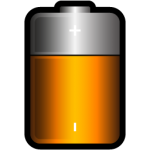 We all have lots of gadgets these days, most using Lithium-Ion (Li-On) batteries. Read this short guide and learn how to prolong their life.
We all have lots of gadgets these days, most using Lithium-Ion (Li-On) batteries. Read this short guide and learn how to prolong their life.
Battery University presents detailed test and technical information about Lithium-ion batteries. Here is some of their advice and recommendations:
- Avoid frequent full discharges and charge more often between uses.
- There is no memory and the battery does not need periodic full discharge cycles other than to calibrate the fuel gauge on a smart battery.
- Exposing the battery to high temperature and being at full state-of-charge for an extended time can be more damaging than cycling.
- The worst condition is keeping a fully charged battery at elevated temperatures, which is the case when running a laptop on the power grid.
- Placing a cellular phone on the heat generating (wireless) charging mat stresses the battery more than if charged on a designated charger.
- When not in use, store the battery in a cool place. For long-term storage, manufacturers recommend a 40 percent charge. This allows for some self-discharge while still retaining sufficient charge to keep the protection circuit active.
- Heat buildup is always a concern and running a laptop in bed or on a pillow may contribute to this by restricting airflow. Not only will heat stress electronic components, elevated temperature causes the electrodes in the battery to react with the electrolyte and this will permanently lower the capacity. Placing a ruler or other object under the laptop to increase floor clearance improves air circulation around the enclosure and keeps the unit cooler.
- A Li-ion battery can also fail because of undercharge. This occurs if a Li-ion pack is stored in a discharged condition. Self-discharge gradually lowers the voltage of the already discharged battery and the protection circuit cuts off between 2.20 and 2.90V/cell.
Let us know what you think in the comments.